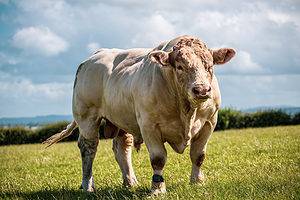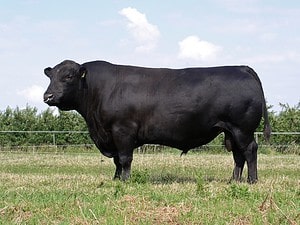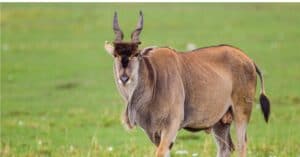We all know milk supposedly does the body good, but which cows make the most of it? Different types of dairy cattle produce different types and amounts of milk. Milk has different purposes and differs in butterfat and protein content, volume, and even color. But when it comes to straight gallons, which cows produce the most milk?
Before cattle can ever get to the point of producing milk, a few things have to be true. First, only female cattle produce milk, and like other mammals, they need to have a baby before they begin milk production, known as lactation. While many people use the word “cow” to refer to all cattle, the name actually only applies to animals that have lactated: cow is the name for female cattle that have had a baby. Babies (calves) are either a heifer (female) or bull (male) calf. Female cattle are heifers until they reach maturity and procreate — only then do they actually become cows!
Producing milk burns a lot of calories, so dairy cows need to eat a lot. When lactating, a dairy cow will eat up to 100 pounds of food per day, and drink 30-40 gallons of water. Despite this huge caloric intake, almost all of the energy goes into milk production rather than muscle development. This is why dairy cows often look skinny compared to beef cattle. Beef cattle only lactate enough to feed their calves, so their bodies convert calories into muscle instead of milk, which gives them a bulkier build.
Different Breeds of Dairy Cows
While there are 60 breeds of beef cattle in the United States, there are only seven primary breeds of dairy cattle: Ayrshire, Brown Swiss, Holstein, Guernsey, Jersey, Milking Shorthorn, and Red and White Holstein.
The Holstein Association of America recognized the red and white Holstein as its own breed in 1964. However, it is genetically similar to the traditional Holstein and the only difference is its color (red and white instead of black and white). This coloring stems from recessive genes. A black and white Holstein can give birth to a red calf and vice versa. As such, the red and white Holstein is under the Holstein banner for this list.
Now, from least to most, here’s how much milk each breed produces!
6. Guernsey

Guernsey cows are a horned breed, but most are dehorned for safety.
©pelvidge/iStock via Getty Images
Guernseys are great to have around if you aren’t worried about the volume of milk.
This medium-sized breed weighs in at around 1,400 pounds but makes the least milk out of any U.S. dairy cow. Guernseys produce just up to five gallons per day. However, what they lack in volume they make up for in butterfat content. Guernsey milk contains 4.7% milk fat, which is the second-highest fat content of any dairy breed. This rich high-fat milk is great for making cheese, cream, and ice cream — so thank a Guernsey next time you enjoy some creamy cheese!
5. Jersey

Jerseys are docile and are said to have one of the best temperaments of any dairy breed.
©Joe Gough/iStock via Getty Images
The smallest of all the U.S. dairy breeds, the dainty Jersey weighs in at just 800-1,000 pounds. While these doe-like cows are petite, they produce more pounds of milk per body weight than any other breed. During a lactation cycle, Jerseys produce around five to six gallons of milk a day. It may not seem like much, but that means these cows produce over 13 times their body weight in milk each cycle. Although Jerseys don’t make a ton of milk, their milk has the highest butterfat content of any breed at nearly 5%. Jersey milk has so much butterfat that it often appears yellowish in color. Primary uses for Jersey milk include cheese, butter, ice cream, and other rich dairy products.
4. Milking Shorthorn
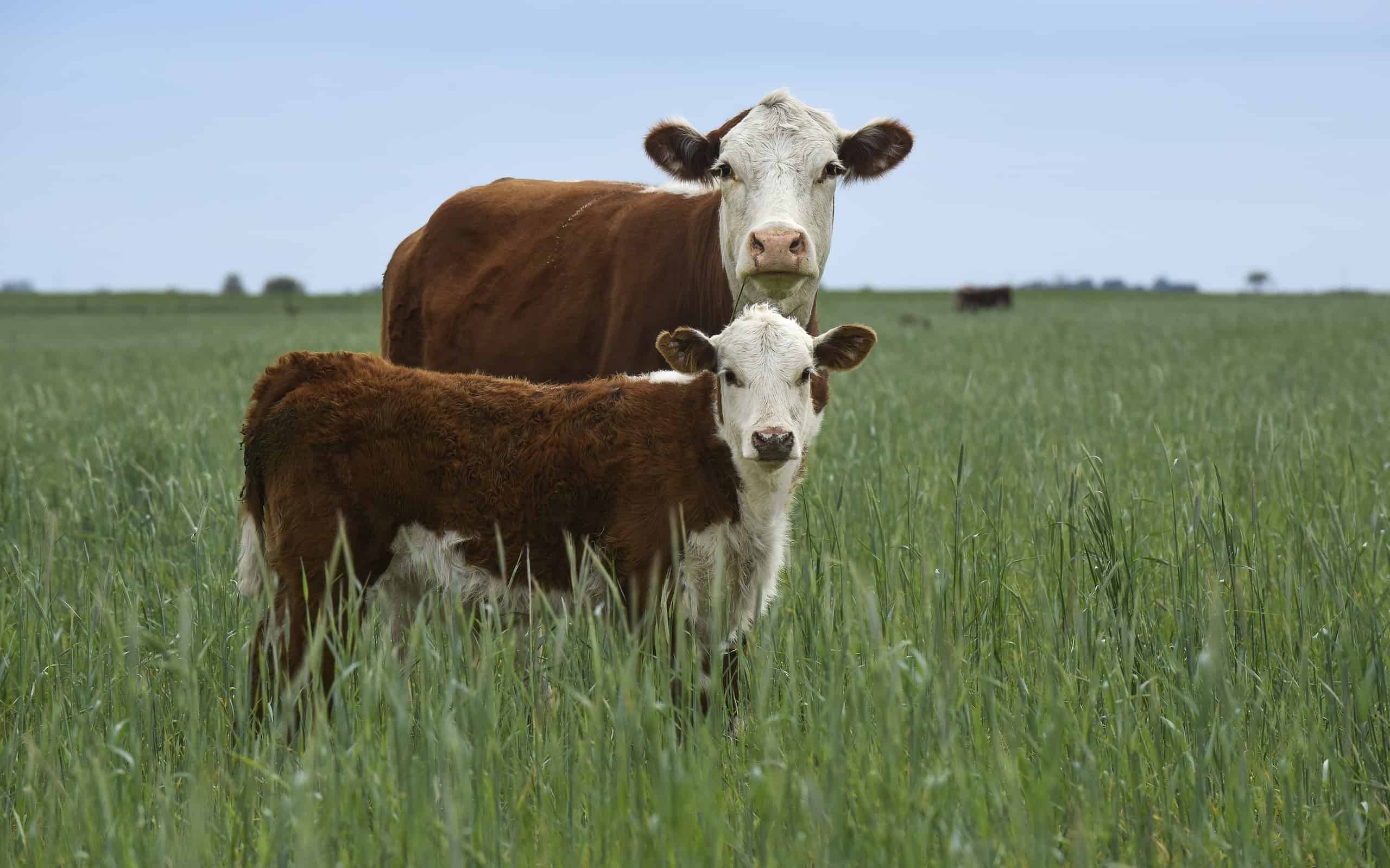
Milking shorthorns are known for their longevity, with some in production for 20 years.
©Foto4440/iStock via Getty Images
The shorthorn is a unique triple-threat breed that can be used for milk production, beef, or labor. These sturdy red and white or roan cows weigh 1,100-1,400 pounds and were one of the first dairy breeds to come to the United States. Milking shorthorns are good milk producers and average around 15,000 pounds of milk per lactation cycle (or around 1,880 gallons). This breaks down to six to seven gallons of milk per day. While these cows produce more milk than Guernseys or Jerseys, shorthorn milk has a lower butterfat content of just 3.8%.
3. Ayrshire
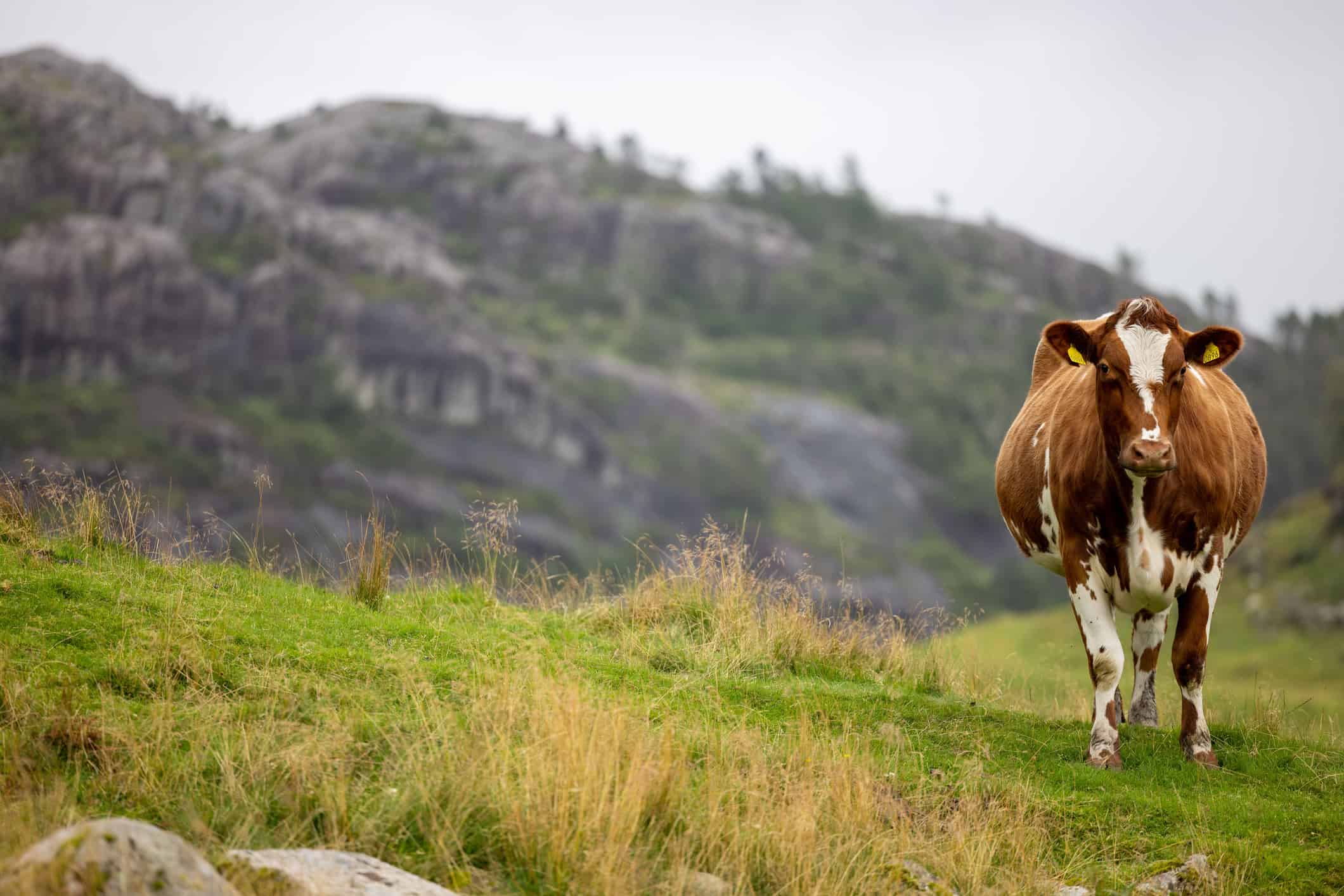
Ayrshire milk is often referred to as “the ideal drinking milk.”
©Wirestock/iStock via Getty Images
If you’re traversing New England, there’s a good chance you’ll see an Ayrshire. This region is home to the largest number of registered Ayrshires. Typically, red and white in color, mature Ayrshires weigh around 1,200 pounds. This breed’s hardiness is something it is renowned for. In 1929 farmers walked two Ayrshires from Vermont all the way to St. Louis, Missouri to prove how tough the cows were. Neither cow suffered any ill effects from the long journey, and both continued to produce impressive amounts of milk.
The third-highest producer in the United States, Ayrshires average around 17,000 pounds (2,000 gallons) of milk per production cycle. This comes out to about seven gallons per day.
2. Brown Swiss
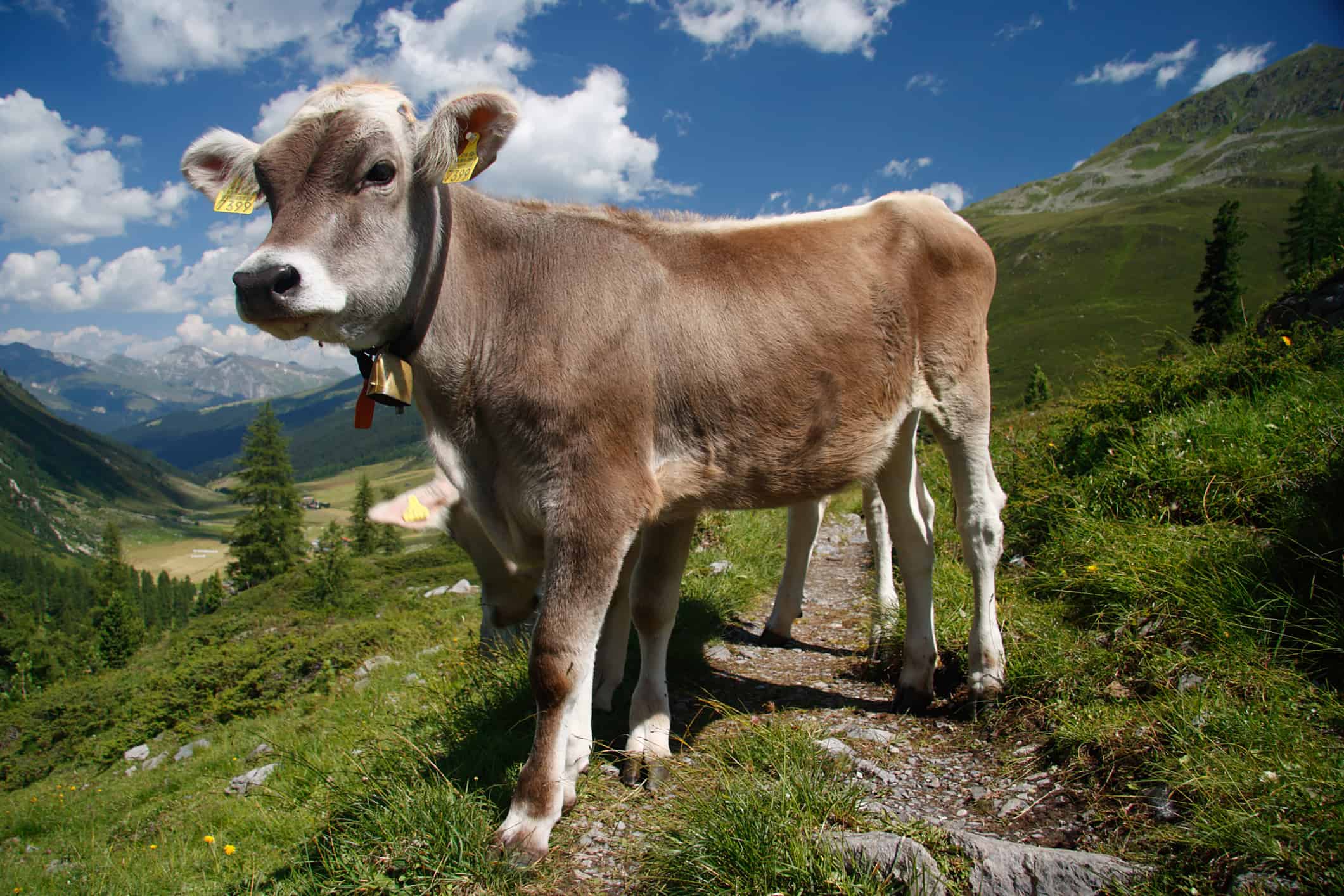
The brown Swiss is a dual-purpose breed and can be used for milk or meat.
©Mathias Pabst/iStock via Getty Images
Hailing from Switzerland, this gentle giant has been around for millennia. The oldest of all dairy breeds, Brown Swiss originated around 4,000 B.C. These old cows are a popular breed, and the world population is estimated to be around six million.
One of the largest breeds of dairy cow at 1,300-1,400 pounds, the Brown Swiss produces an equally large amount of milk. In one lactation cycle, a Brown Swiss can produce over 22,000 pounds of milk (an impressive 2,600 gallons), or eight gallons per day. In addition to this impressive production, Brown Swiss milk has a high butterfat content, and the fat-to-protein ratio makes it excellent for cheesemaking.
1. Holstein
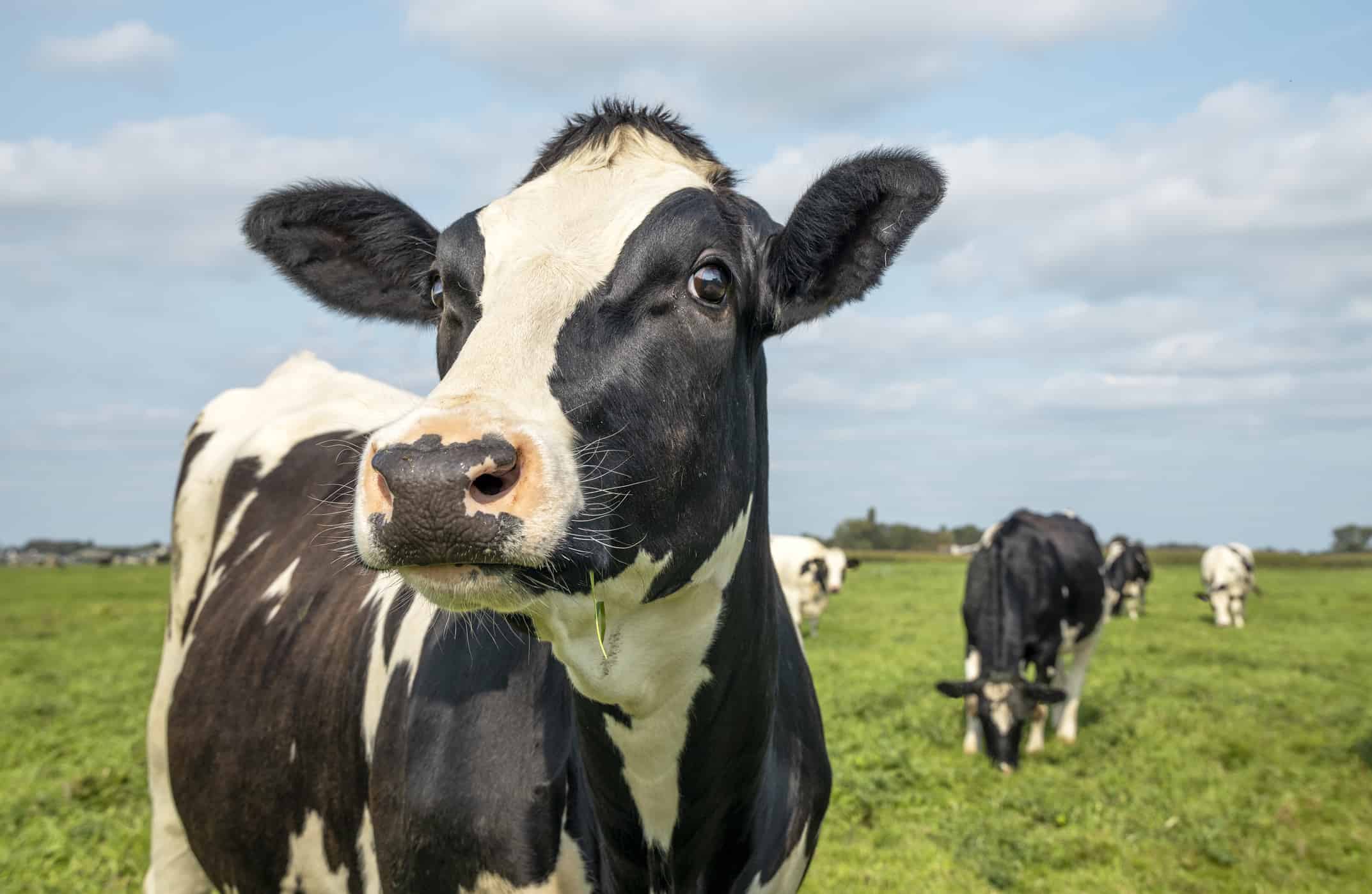
Holsteins weigh around 90 pounds at birth but can grow to be over 1,500 pounds.
©Clara Bastian/iStock via Getty Images
Number one on our list of top dairy producers goes to the iconic Holstein. This easily recognizable breed is famous for its trademark black-and-white coloration. The first Holsteins came to the United States from the Netherlands in 1852 and have steadily grown in popularity ever since. In fact, they are so popular that Holsteins make up over 90% of the 9 million dairy cows in the United States. The Red and White Holstein does not differ from its traditionally colored counterparts in terms of size or milk production.
And what are we talking about in terms of size and production? At 1,500 pounds, Holsteins are the largest dairy breed in the United States — and they make the most milk. On average, these cows produce around 23,000 pounds of milk (2,674 gallons) per lactation cycle. This breaks down to between nine and 10 gallons of milk every day.
If that’s not impressive enough, Holsteins also hold the world record for milk production. In 2017, a cow from Wisconsin produced 78,170 pounds of milk in one year. The Holstein’s low butterfat content and high yield make it great for drinking milk. In fact, Holsteins produce 90% of milk purchased in grocery stores. Well done to this impressive breed!
Summary of Which Cows Produce the Most Milk
| Breed | Milk Production |
|---|---|
| 6. Guernsey | 4.5-5 gallons per day |
| 5. Jersey | 5-6 gallons per day |
| 4. Milking Shorthorn | 6-6.5 gallons per day |
| 3. Ayrshire | 6.5-7 gallons per day |
| 2. Brown Swiss | 8-8.5 gallons per day |
| 1. Holstein | 9-10 gallons per day |
The photo featured at the top of this post is © ahavelaar/iStock via Getty Images
Thank you for reading! Have some feedback for us? Contact the AZ Animals editorial team.




